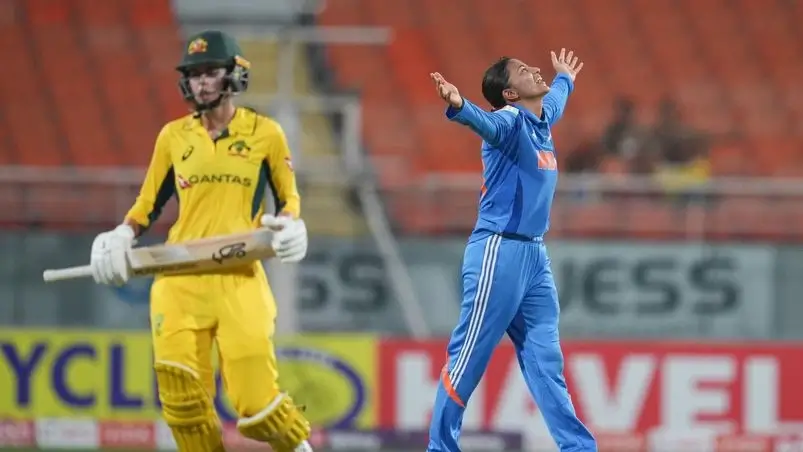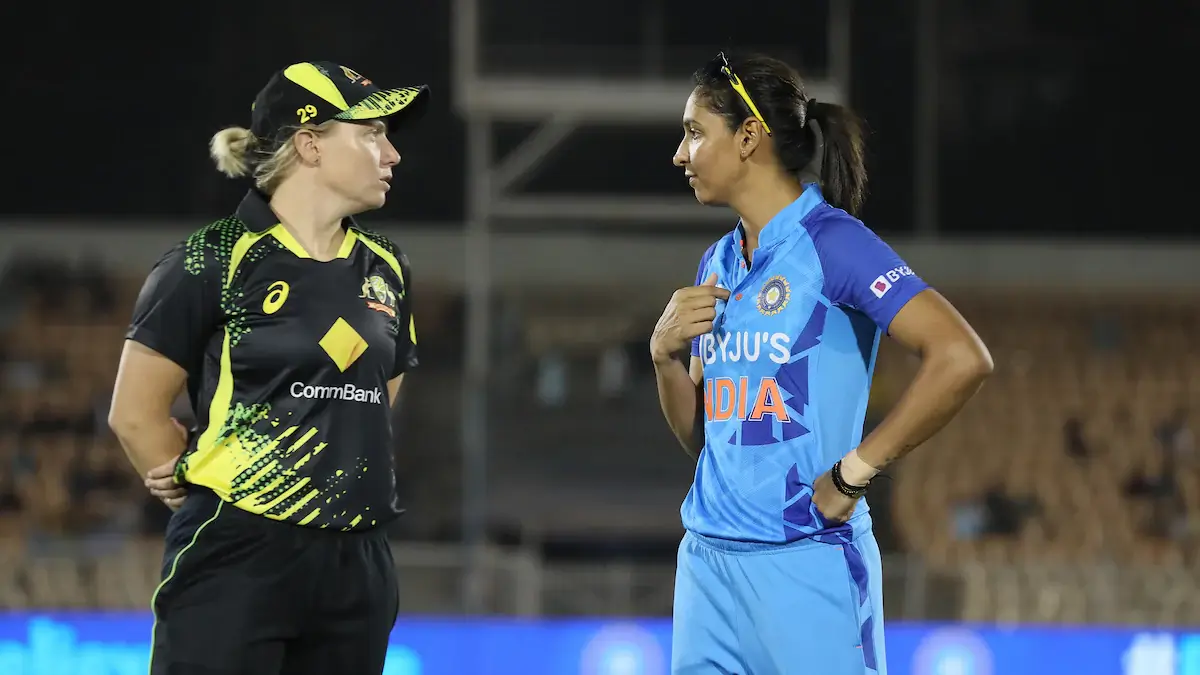The Women’s ODI World Cup finally hits a high note as India face Australia in Visakhapatnam. The match comes at a crucial point in the tournament where both sides need momentum. A full house of over 15,000 fans is expected, with the ACA-VDCA Stadium buzzing to host what could become the most-attended league match of this edition.
India’s campaign so far has mixed moments of promise with patches of inconsistency. The batting unit has failed to deliver consistent scores, and their fielding has lacked polish. More worrying has been their struggle against left-arm spin, a pattern that oppositions have quickly targeted.
Australia, though slightly shaky in recent chases, remains the most complete side. They recovered from collapses thanks to their middle-order strength. Ashleigh Gardner and Beth Mooney have powered Australia back into rhythm when needed. With dew, turn, and crowd pressure at play, both teams will need clear execution. India’s task is tall, but the energy in Visakhapatnam could fuel something special.
Stakes are high as India look to redeem and Australia aim to dominate
This fixture carries immense value in the World Cup context. India’s journey has hit turbulence due to weak starts and frequent middle-order collapses. The trio of Smriti Mandhana, Harmanpreet Kaur, and Jemimah Rodrigues must shoulder responsibility and handle pressure moments better. Their dismissals to left-arm spin have raised questions about technical adjustments.
Australia, by contrast, has showcased its deep bench strength. Even after being reduced to 128 for 5 and 76 for 7 in earlier games, they clawed back through big hundreds from Gardner and Mooney. That resilience defines why Australia remains tough to beat. Yet, their minor collapses offer India faint hope if the bowlers strike early.
India’s bowling unit, led by Sneh Rana and Kranti Gaud, has looked sharp in bursts. But lack of sixth-bowling support often leaves gaps in pressure situations. Australia’s likely inclusion of Sophie Molineux could prove key against India’s left-handers. The pitch in Visakhapatnam favors both spin and seam movement under lights, adding another strategic layer.
Both sides arrive with identical goals — to stamp control and fix old mistakes. India’s poor catching has cost runs; Australia’s early collapses have invited pressure. The one who controls these small margins might walk away victorious.
Spotlight on Harmanpreet Kaur and Tahlia McGrath
Every time India play Australia, eyes turn to Harmanpreet Kaur. Her 2017 semi-final knock remains iconic, but her current form is shaky with scores of 9, 19, and 21. Harmanpreet’s hunger for a defining innings has never been higher. Against a world-class bowling attack, she will aim to reset rhythm and inspire confidence.
For Australia, Tahlia McGrath represents stability in chaos. Though often batting lower, she has turned collapses into partnerships. Her late-order contributions hold crucial weight, especially when early wickets fall. McGrath’s all-round skills give Australia breathing space few teams enjoy.
The matchup between Harmanpreet and McGrath symbolizes the larger contest — leadership versus adaptability. Both carry the responsibility of momentum and morale. If either clicks, the match could swing sharply.
Team composition, pitch report, and tactical plans
India’s think-tank faces a dilemma before the toss. Should they add another bowler or trust their batting? The five-bowler setup has cost them against South Africa, but their inconsistent batting makes change risky. Deepti Sharma remains the anchor, offering balance between control and aggression.
Australia’s selection hinges on Molineux’s fitness and tactical value. Her left-arm spin suits the venue and India’s weakness perfectly. The alternative, Georgia Wareham, brings wrist-spin variety but less control. Australia may field both if the surface offers enough turn.
Visakhapatnam promises runs early, swing in daylight, and sharp turn late. Evening dew complicates matters further, making chasing slightly easier. Captains must weigh these factors carefully before choosing. Temperature will hover around 32°C with heavy humidity. Such conditions could test fielders’ stamina, making hydration and rotation essential.
Dew in India’s previous match here tilted advantage toward batters. Expect both teams to consider bowling first. India’s best hope lies in early breakthroughs and disciplined middle-overs spin. Australia’s edge lies in game management — they rarely lose control once settled.
Stats, trivia, and historical insights
Smriti Mandhana needs just 58 runs to reach 5000 ODI runs. Her battle against Gardner adds intrigue — Gardner has dismissed her nine times in T20s, eight in the powerplay. However, Mandhana has a better ODI record against her, scoring 148 runs in 132 balls for five dismissals.
Beth Mooney is nearing another landmark, only 93 short of 3000 runs. Deepti Sharma stands just three wickets away from the 150-wicket milestone. Rising pacer Kranti Gaud has already dismissed Alyssa Healy three times in 35 balls, conceding only 39 runs. That duel could decide the tone of the powerplay.
Attendance at Visakhapatnam is expected to surpass the previous women’s ODI record of 22,843 from Guwahati. The stadium atmosphere will be electric, setting up the perfect cricketing stage.
Conclusion
India’s meeting with Australia promises skill, tension, and character tests. Both teams arrive with issues to solve — India’s brittle top order and Australia’s recent batting dips. The match will reward teams that adapt faster to Visakhapatnam’s shifting conditions.
Harmanpreet and Mandhana carry India’s hopes for revival. Gardner, Mooney, and McGrath remain Australia’s core match-winners. Fielding precision, spin control, and toss decisions will shape this clash. Small moments, like dropped catches or partnerships, could define the result.
Fans can expect intensity from the first over till the end. This is not just another group match — it’s a statement game. India aim to prove they belong among champions, while Australia seek to maintain their aura. The outcome may echo across the tournament, setting tone for the knockouts ahead.







